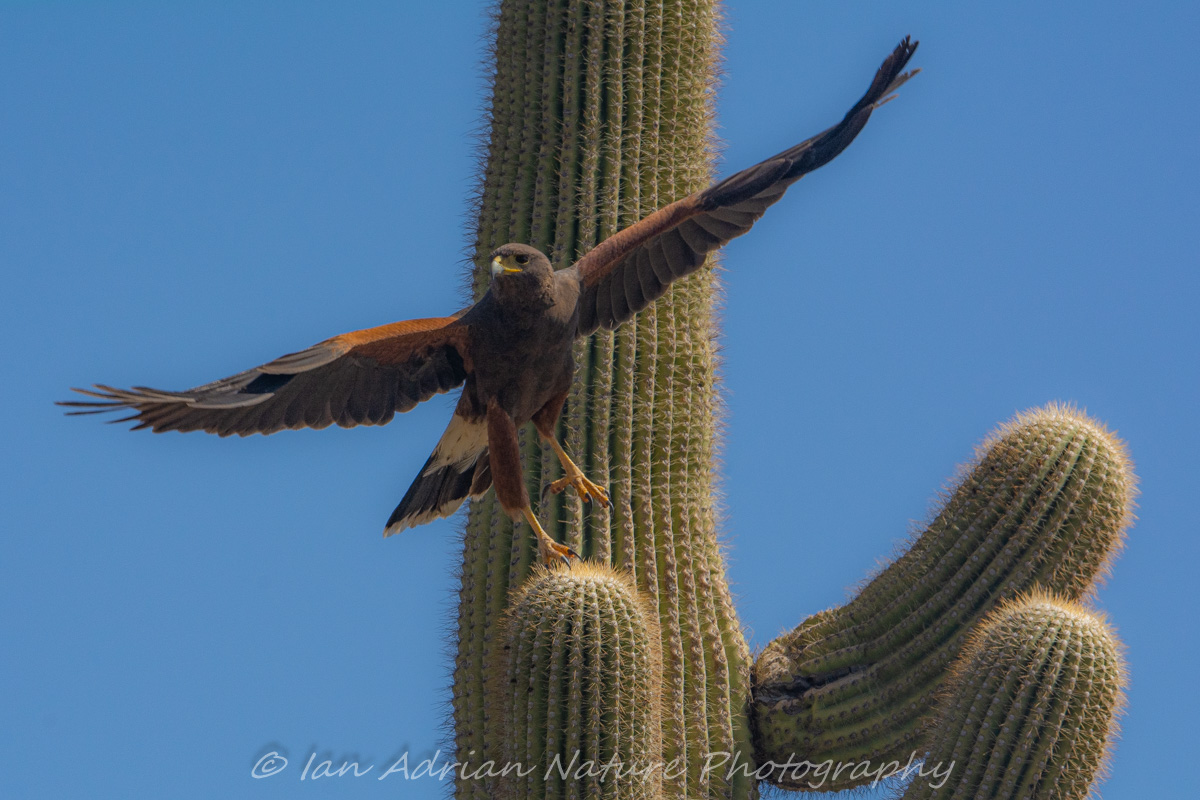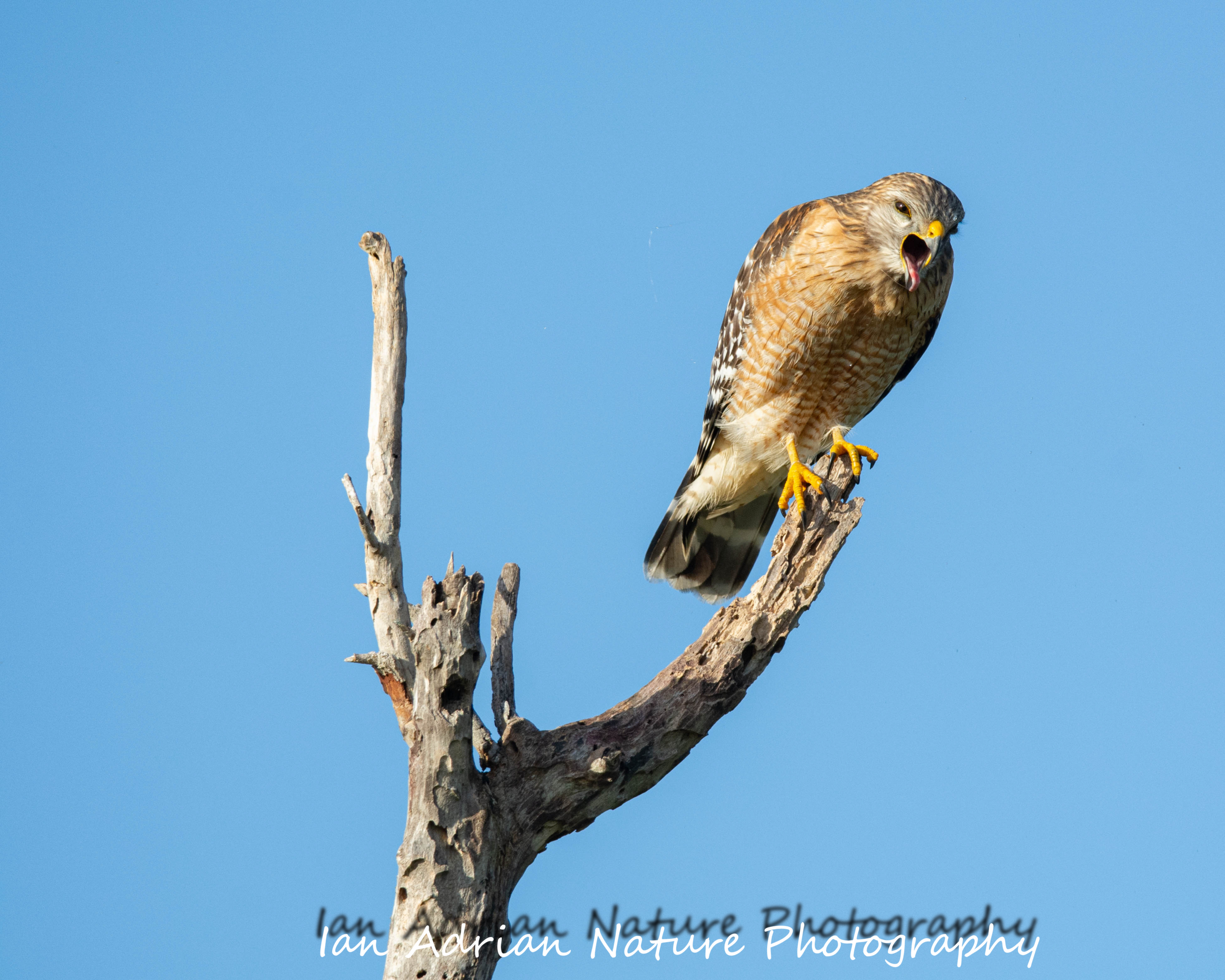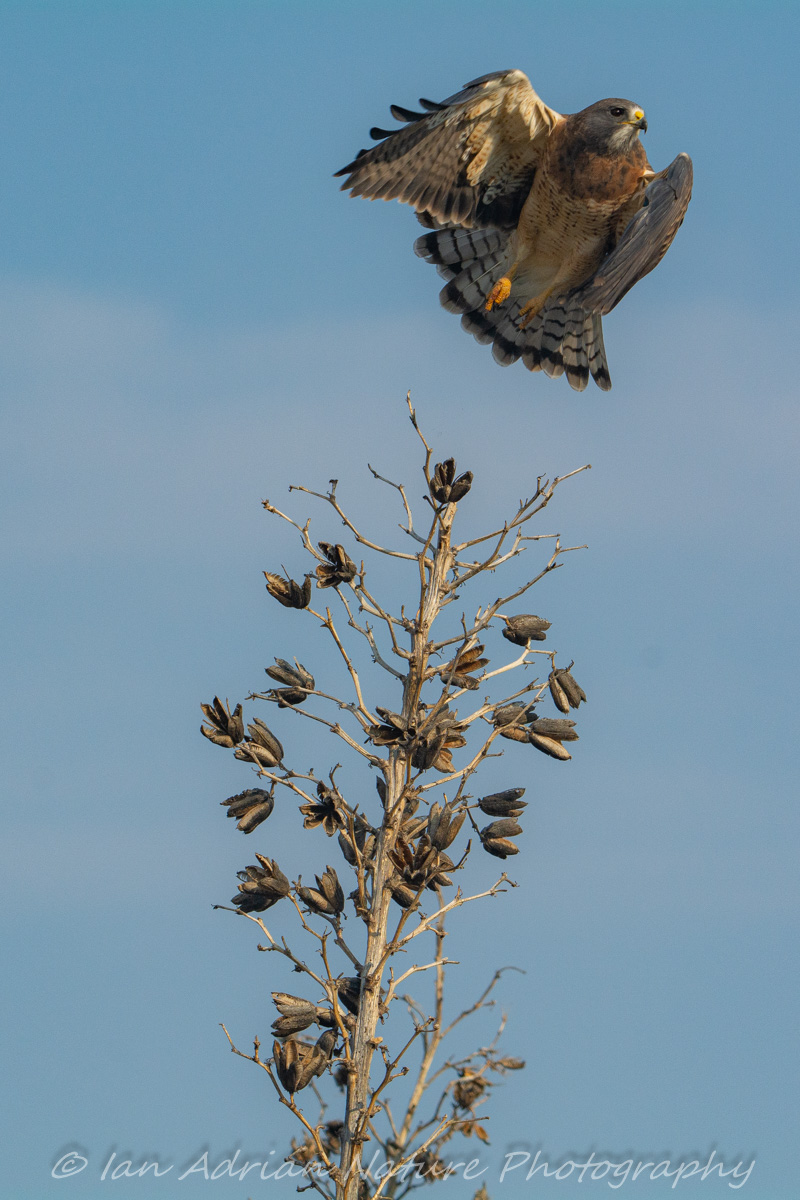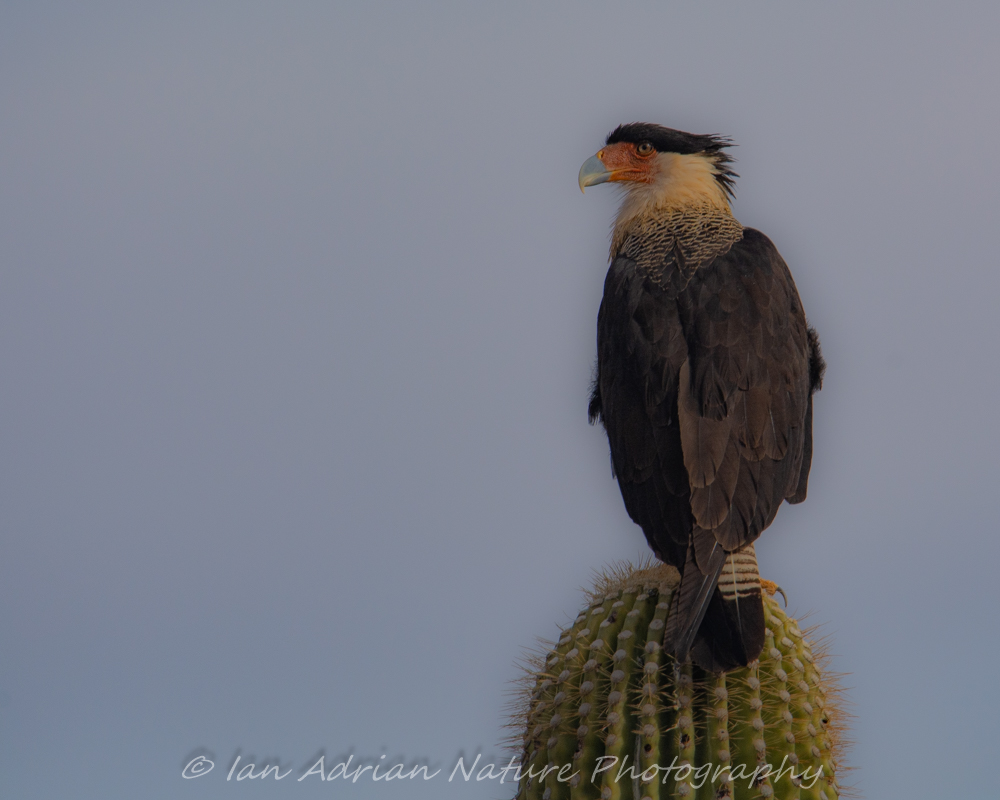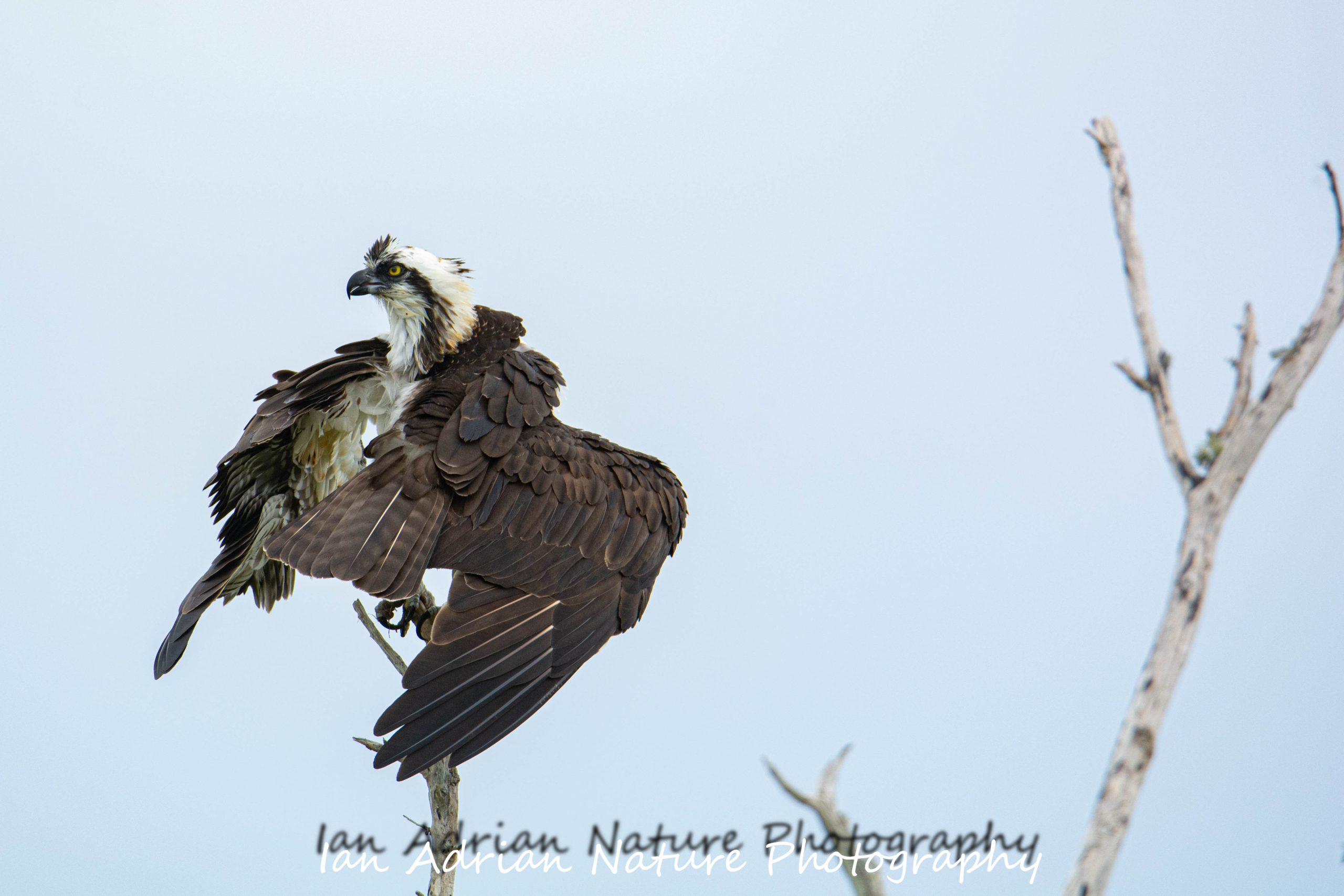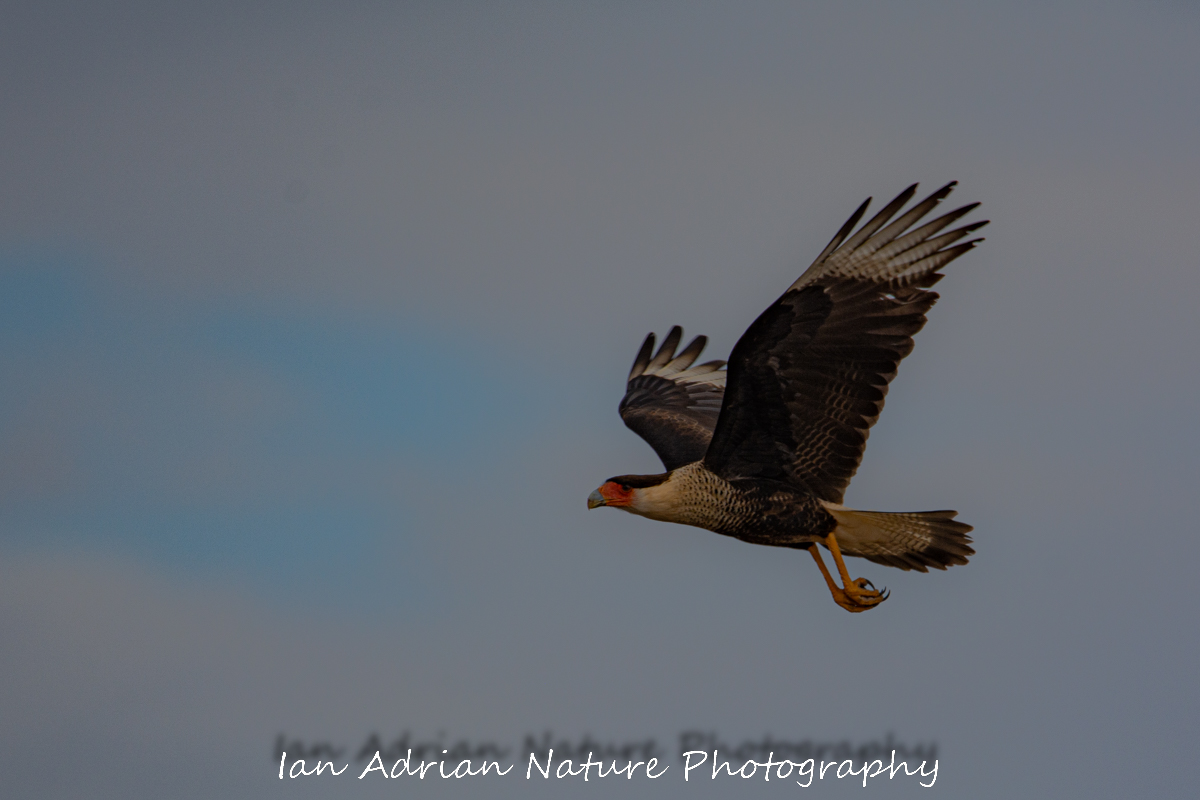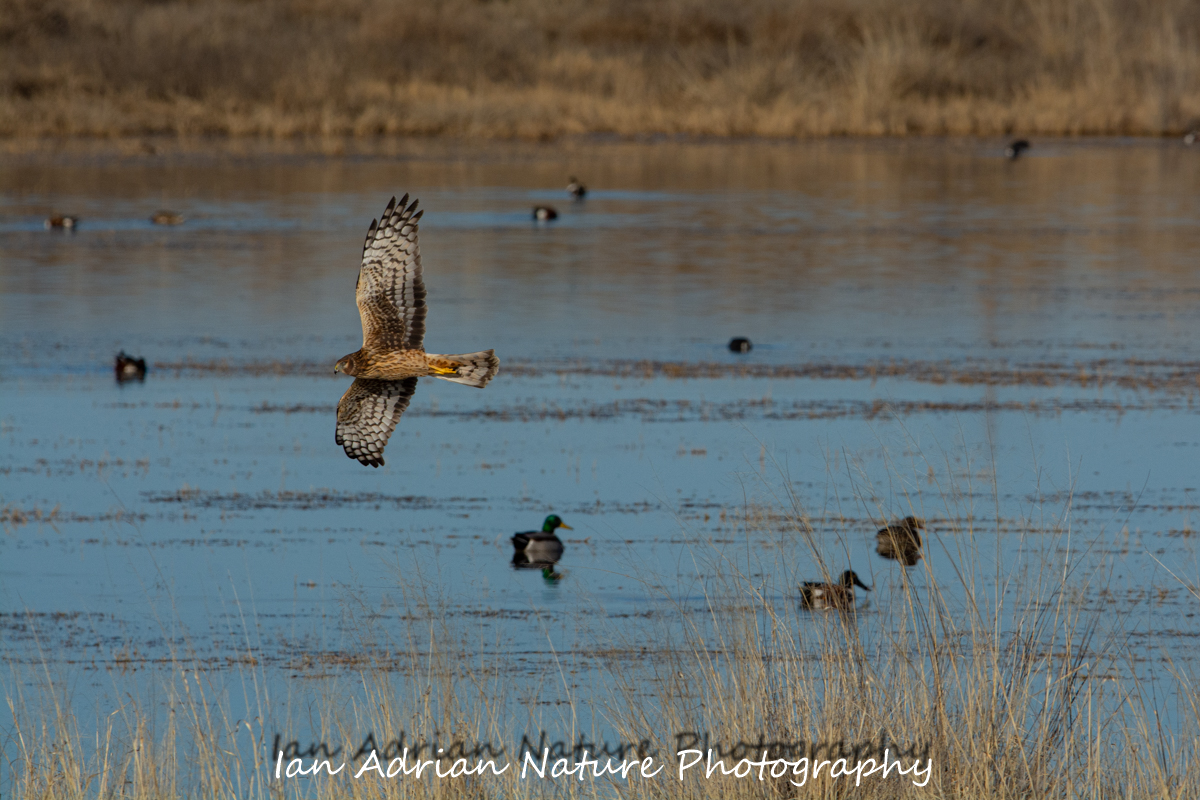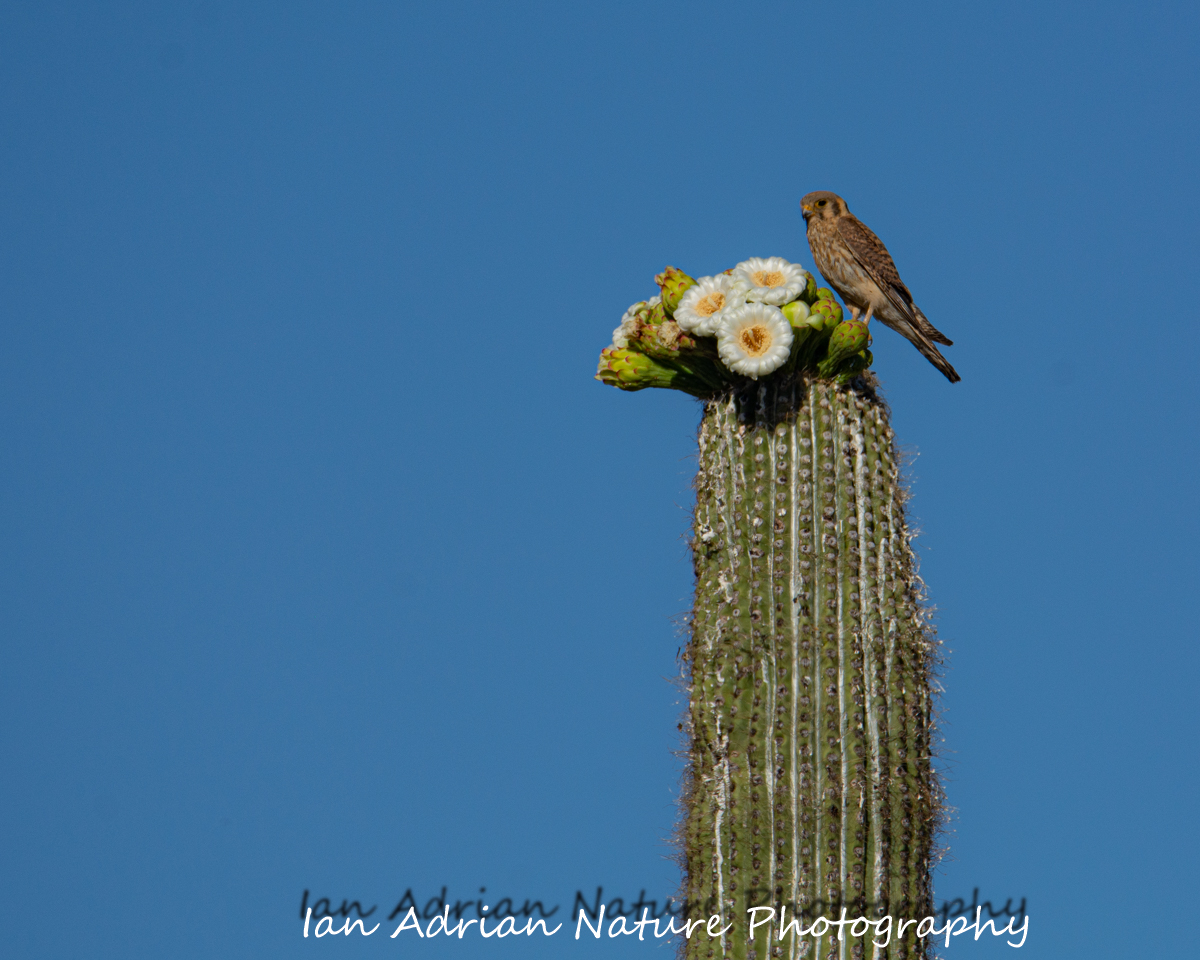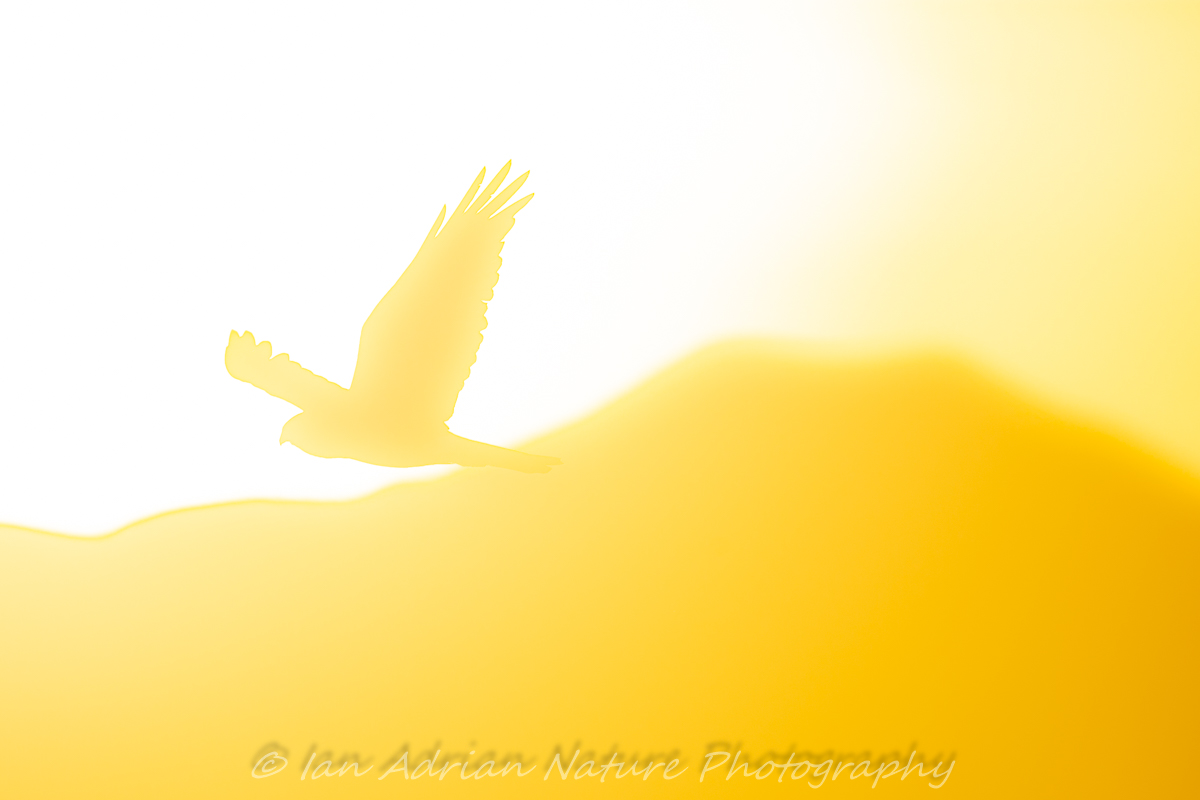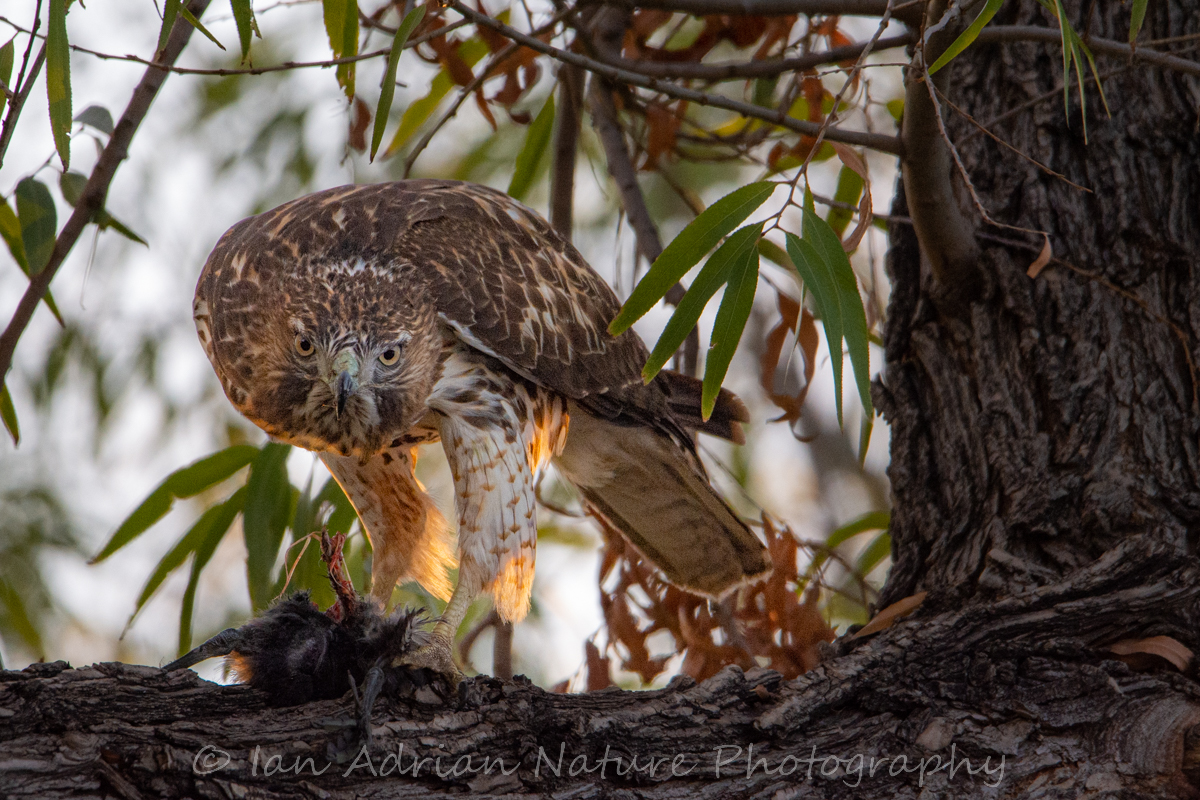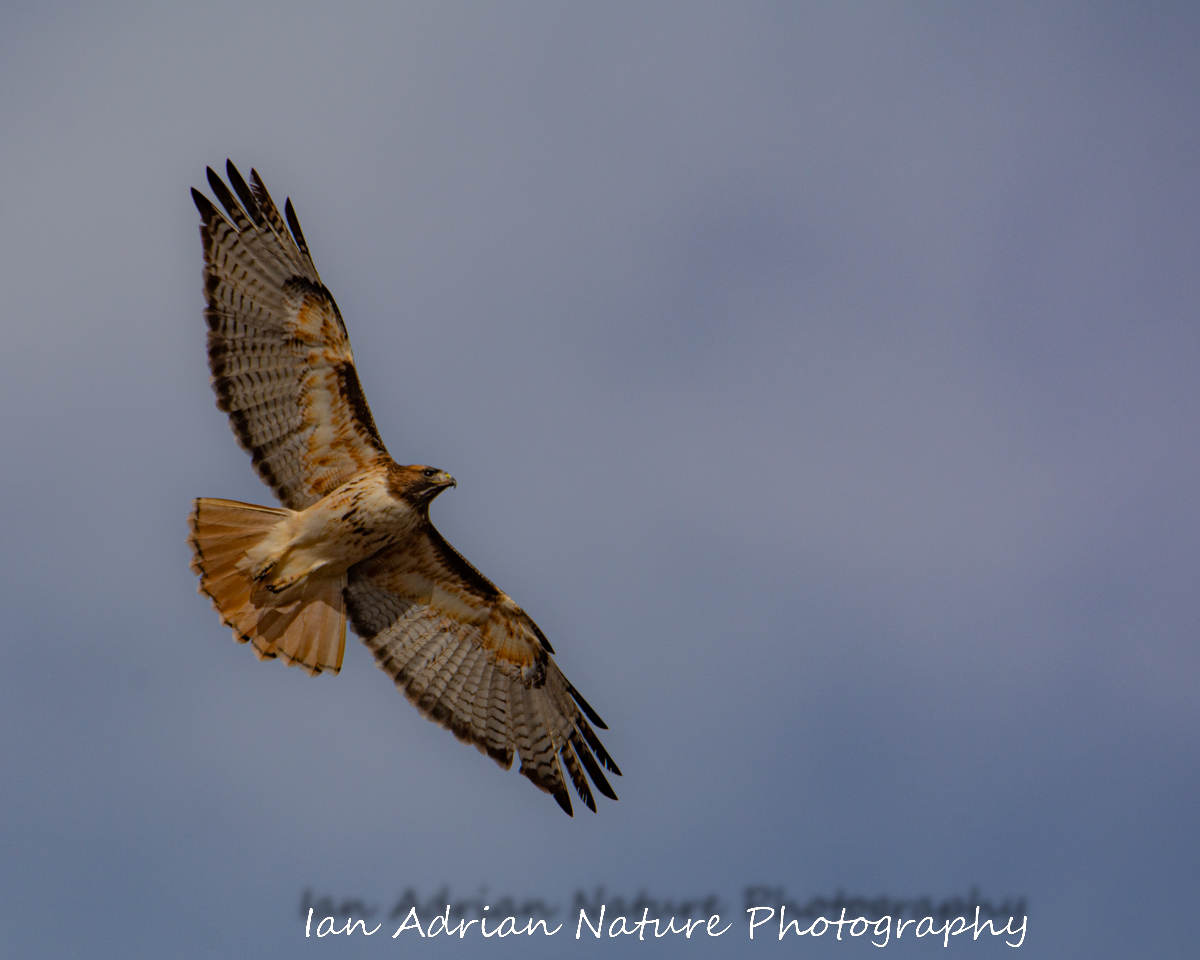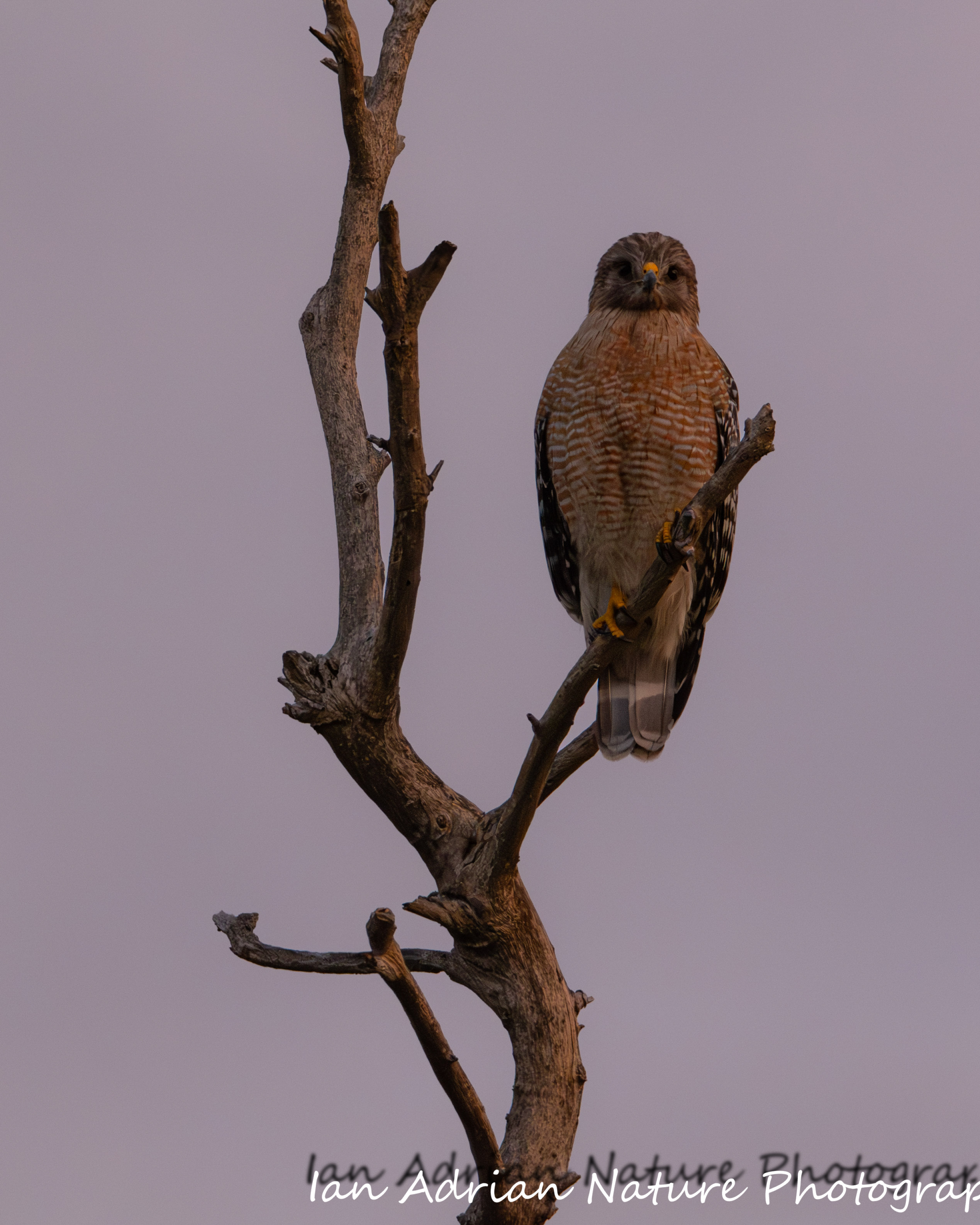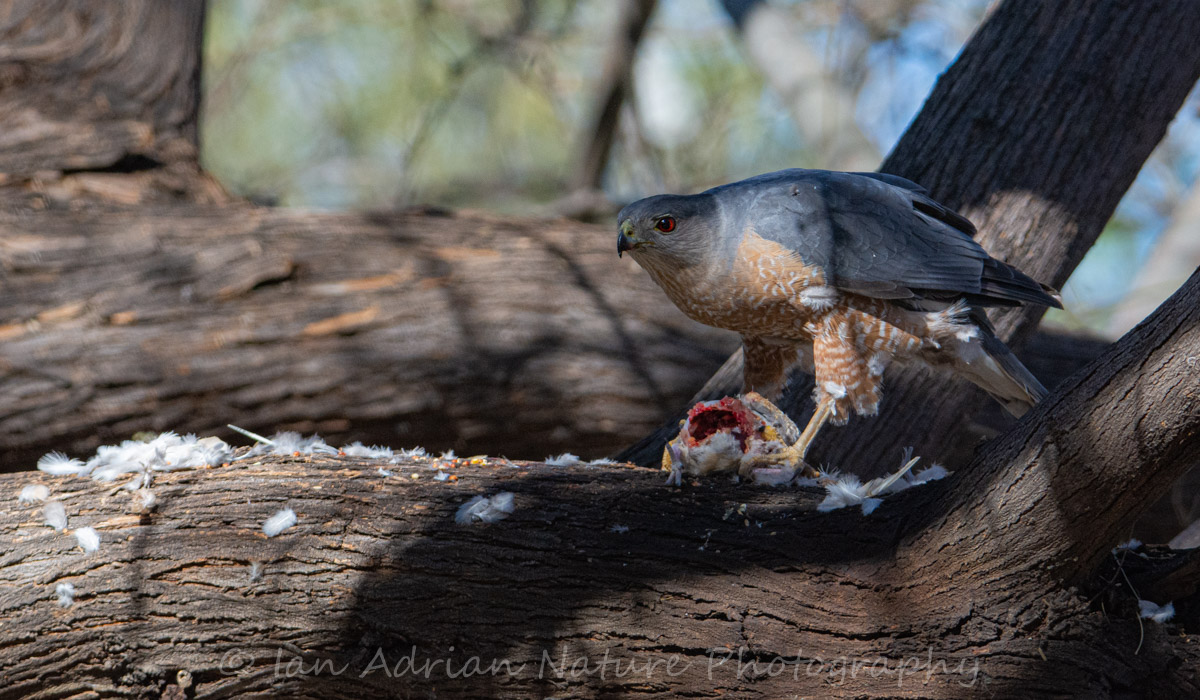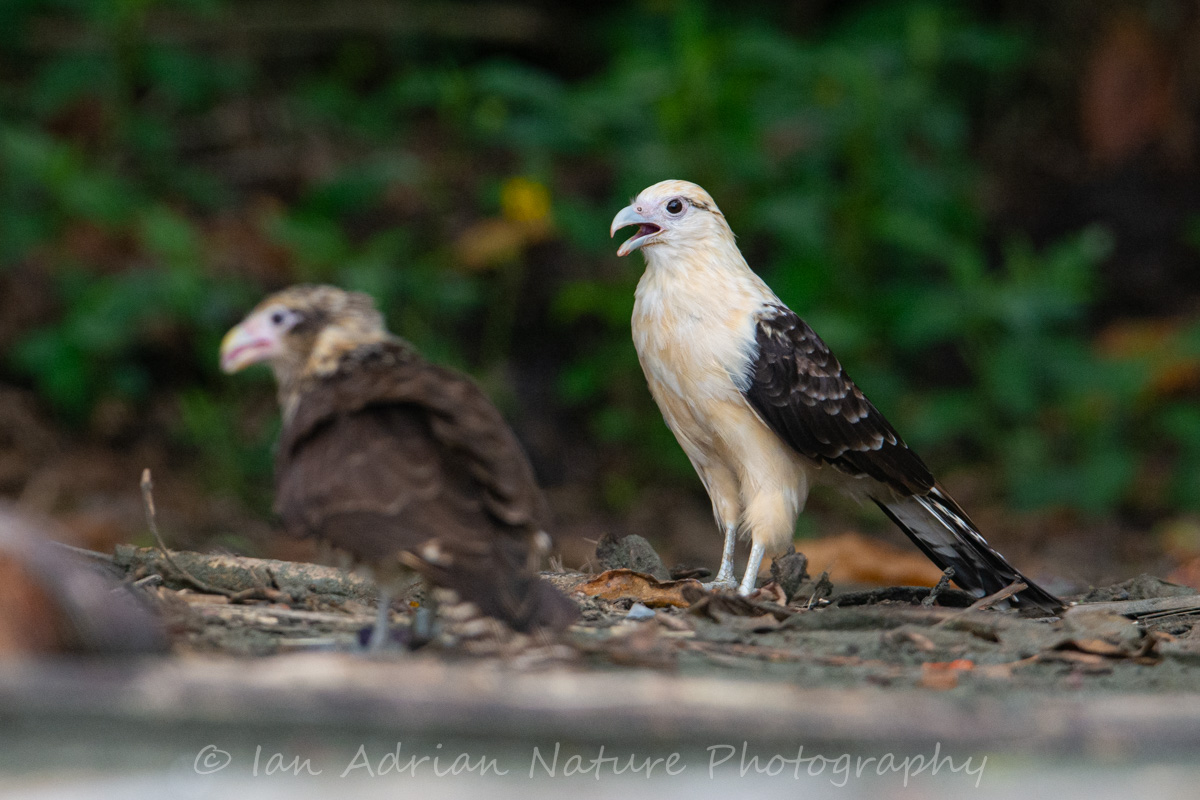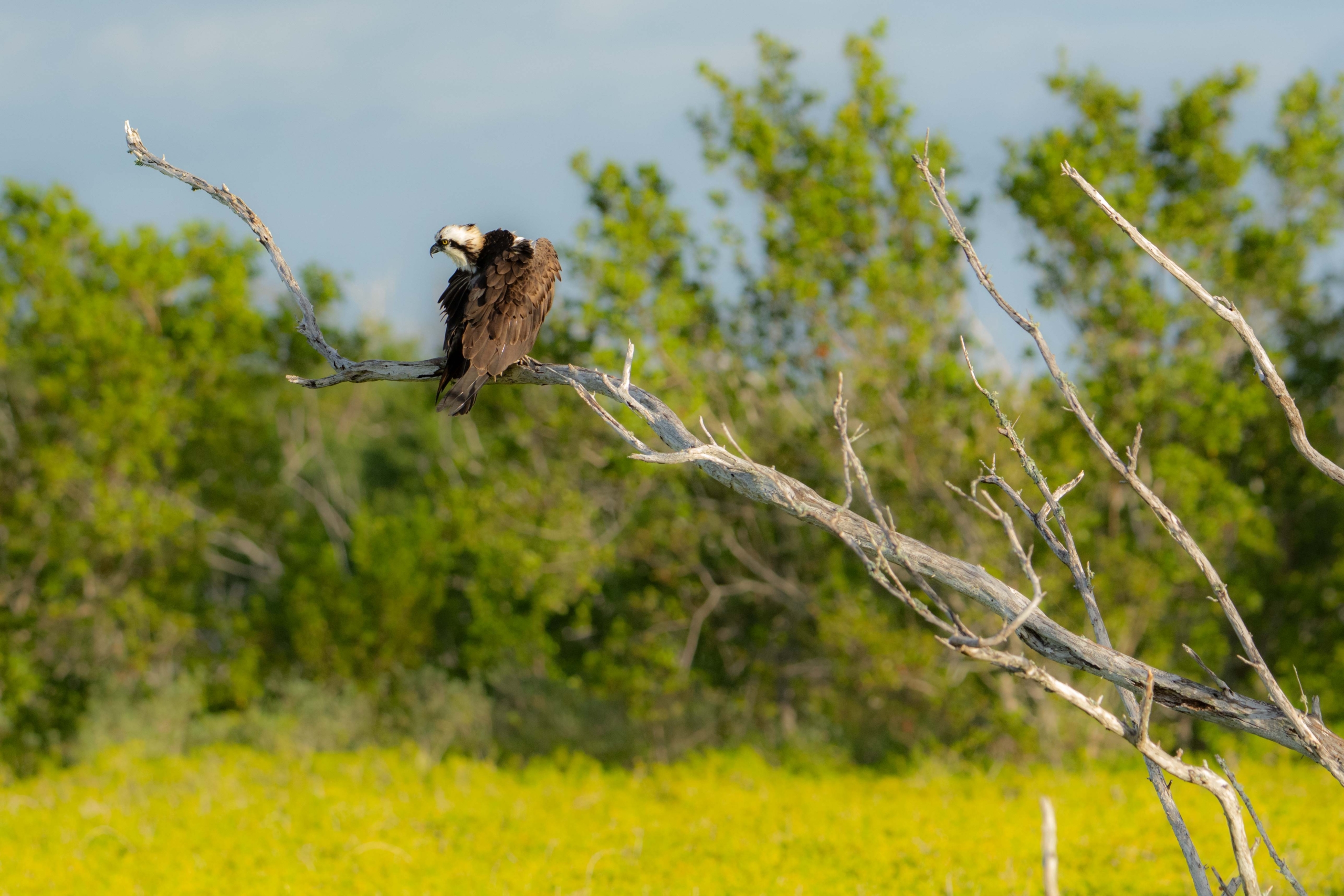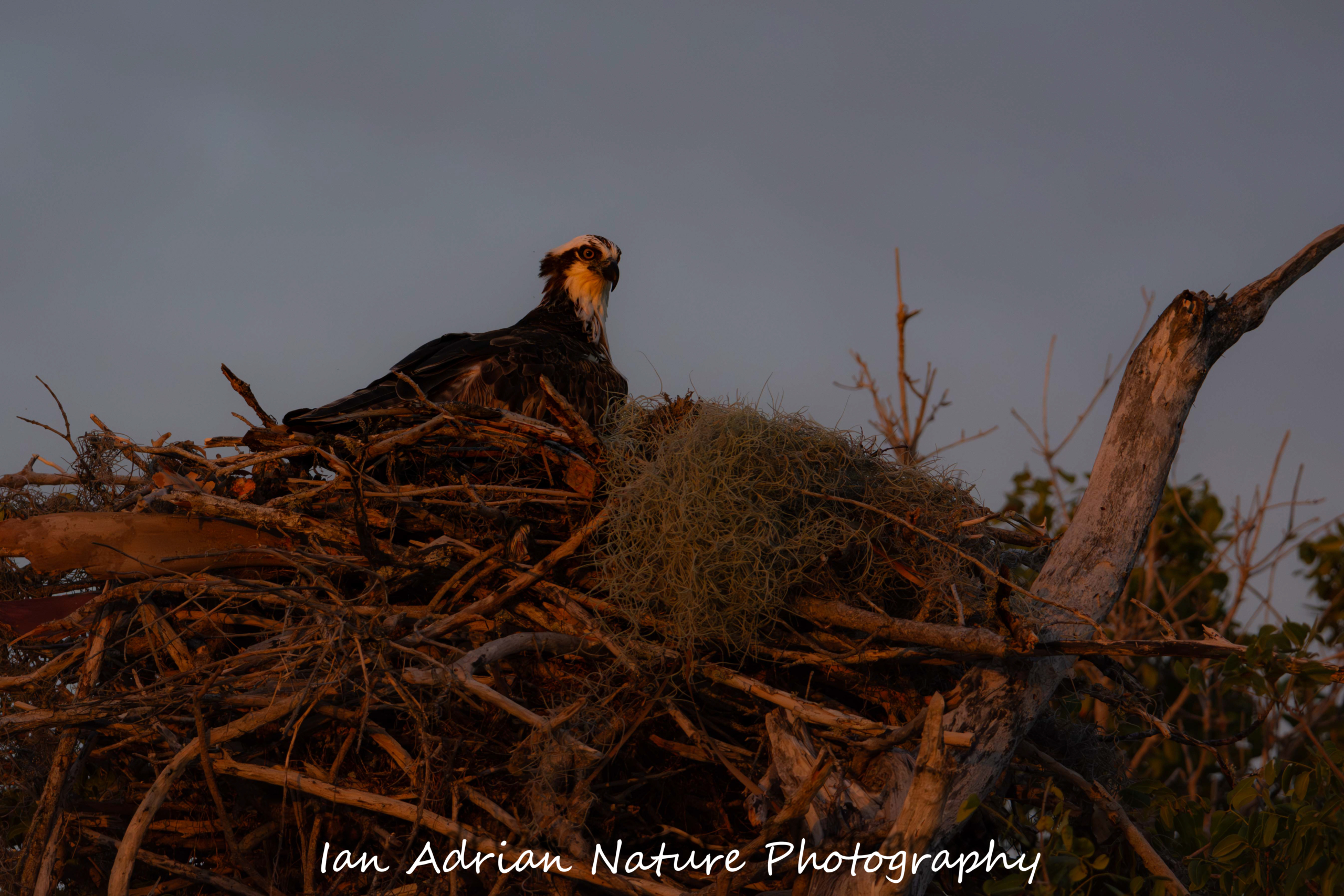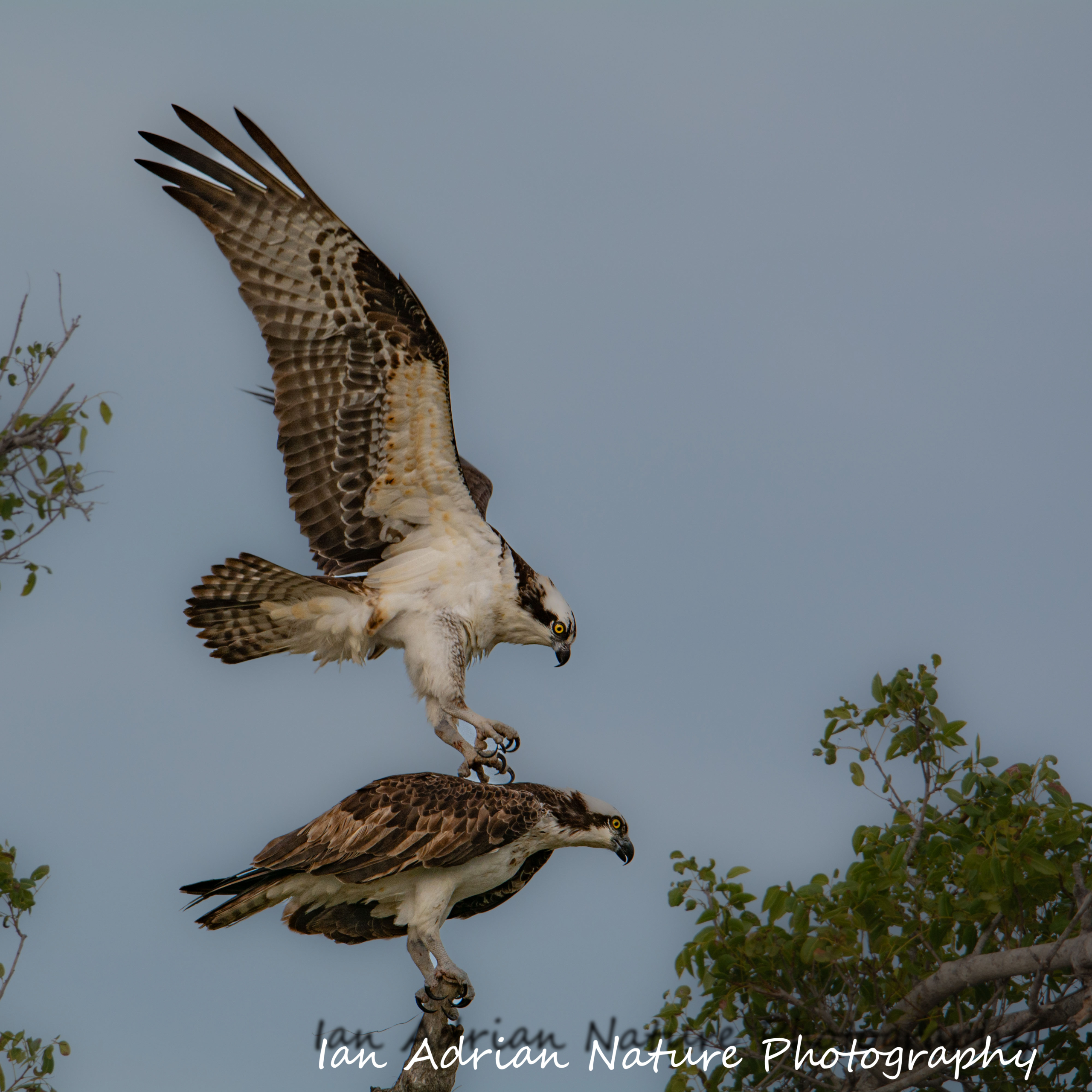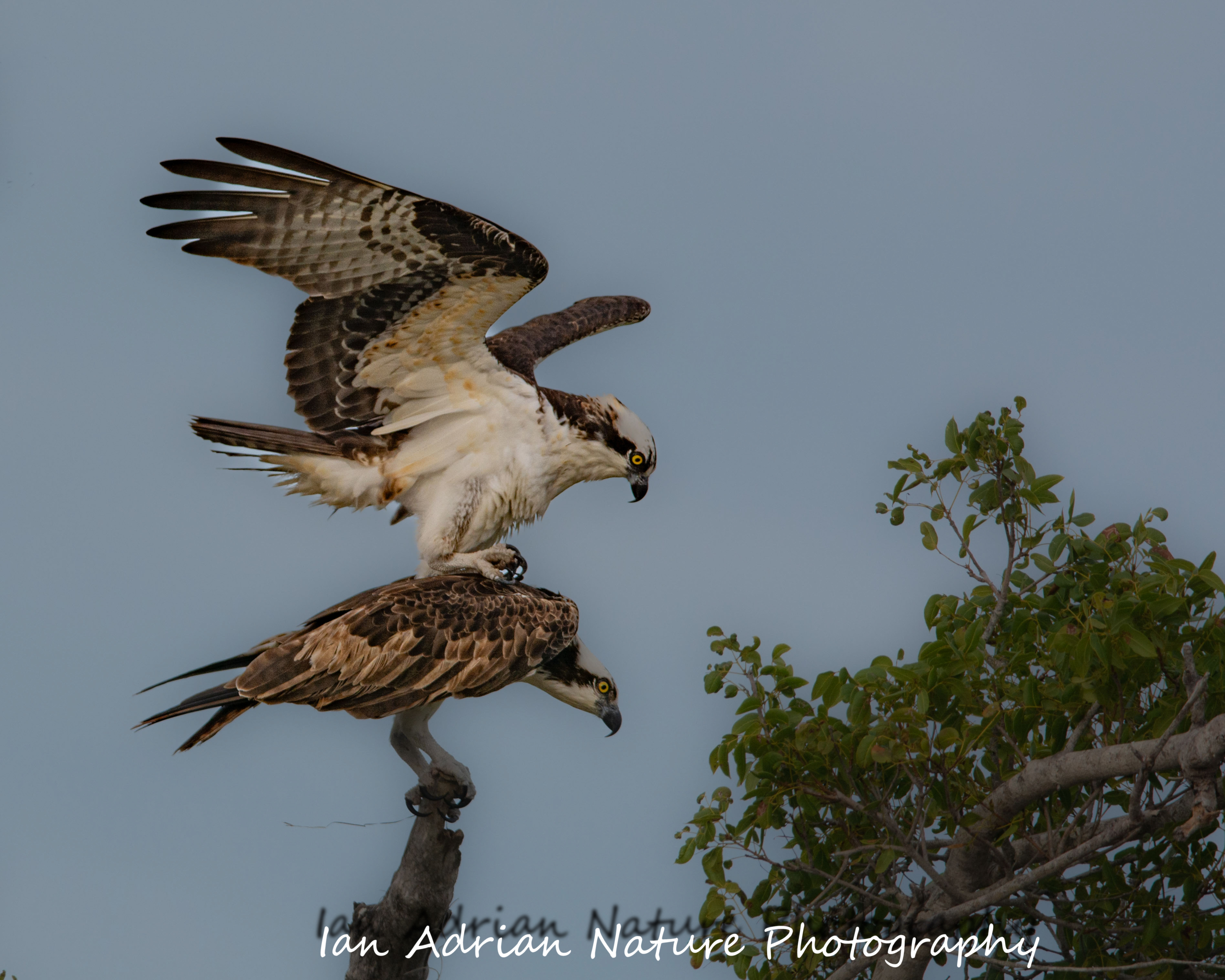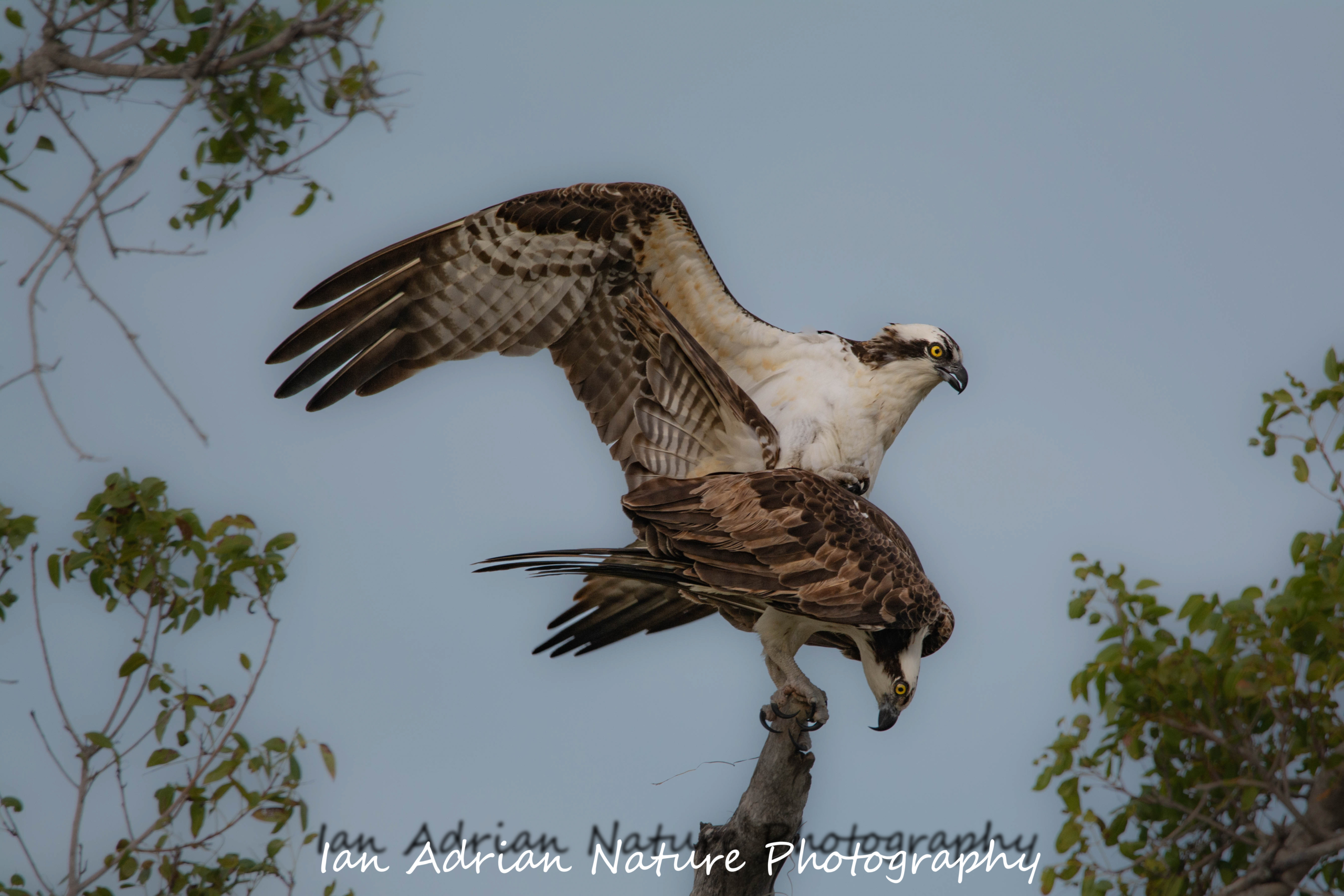Screaming from the Sky
Perched in the most exposed perch to be found, this stunning red-shouldered hawk proudly makes his / her voice heard. Everglades National Park, FL.
Harris Hawk
Harris hawks are quite unusual in being the only North American species known to hunt in groups. These groups are often closely-related, and coordinate their hunting to trap squirrels, rats, and other small creatures amidst the thorny labyrinths of our Sonoran Desert.
Ironwood National Forest, AZ.
Purchase This Print
A Yucca Perch
I watched this Swainson's hawk for quite some time as he/she scanned the open grassland. Eventually, this amazing creature sluggishly stretched, evacuated, then took flight. Willcox, AZ.
Purchase This Print
Caracara on a Cactus
Caracaras are primarily tropical birds. Nonetheless, these beautiful raptors can still be found within select Southern AZ habitats. Caracaras behave like a cross between vulture and hawk, readily gobbling down carrion, but also catching live prey when available.
Hunting Harrier
Harriers apply a unique hunting strategy. They glide slowly over wetlands and vast grassland habitat in search of prey. When a rodent, reptile, or small bird is within striking distance, the harrier quickly arcs downward to snatch up the hapless creature. Tucson, AZ.
Cactus Kestral
The American Kestral is considered North America's smallest "hawk." These agile little predators are just at home in the middle of the desert as they are in eastern farmlands. The common denominator seems to be a large, open swath with great visibility. Saguaro National Park, AZ.
Golden Ghost
Male harriers are often referred to as "grey ghosts" for their beautiful coloration and mysterious nature. The last traces of golden hour light magnificently grace this female northern harrier with the only lighting worthy of such an incredible raptor. Tucson, AZ.
Goggles Off
Raptors have an extra eyelid referred to as a nictitating membrane. This semi-transparent body part acts rather like goggles that we might wear to protect our visual receptors from wind and dust.
I watched this hearty red-tailed hawk atop Mt Lemmon, one of the highest peaks in Southern Arizona, as a storm brewed around us. When winds began to intensify, the eyelid came down to protect his / her eyes. As the turbulence subsided, the piercing eyes yet again became visible.
Perching Predator
A red-shouldered hawk perches proudly above the treeline as dawn light just begins to tantalize the sky. Everglades National Park, FL.
Cooper’s Catch
Like other accipiters, Cooper's Hawks are specialized bird hunters. More slender and agile than larger hawks, they can turn on a dime, accelerate quickly, and maneuver through absurdly dense foliage. While chatting in the shade of a large tree, a friend and I suddenly noticed this incredible, macabre sight playing out directly overhead. Tucson, AZ.
Caracara Couple
On an overcast dawn walk along the beach, the surf flirting with wet sand as it frothed around my feet. I was greeted by the presence of these two yellow-headed caracaras. Mother (white) was teaching her offspring to forage for crab remnants. They seemed to scavenge up quite a meal! Puerto Jimenez, Costa Rica.
Osprey Profile
When gazing into your eyes, I see alertness and intelligence. When standing so close I see a consciousness not so different than my own. Everglades National Park, FL.
Fields of Gold
Perched over a blooming coastal prairie, the male osprey daintily preens. Everglades National Park, FL.

